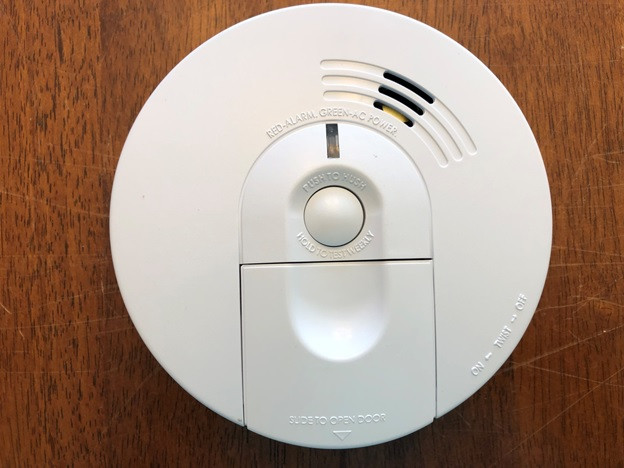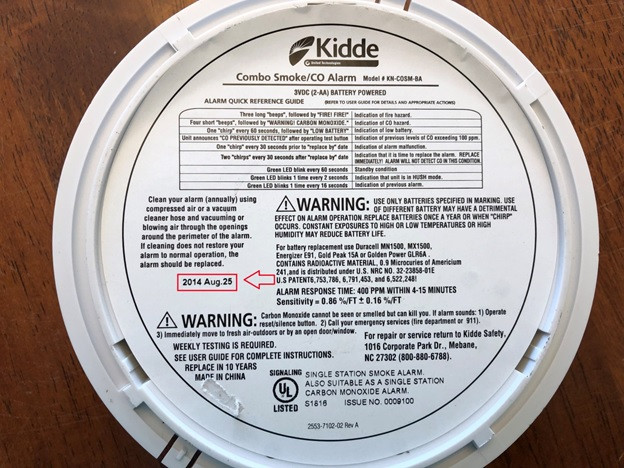As a homeowner, ensuring the safety of your loved ones within your home is of utmost priority. One essential yet often overlooked aspect of home safety is the proper installation, maintenance, and use of smoke detectors and carbon monoxide detectors. These silent guardians can save lives, alerting you to potential fires and dangerous gas leaks that may be undetectable under normal circumstances. In this comprehensive guide, we'll cover the basics of these lifesaving devices, how to maintain them, and how to react in the event they raise an alarm, all in the name of keeping your home protected.

Choosing the Right Smoke and Carbon Monoxide Detectors
With numerous brands and models available, it's essential to select detectors that cater to your home's specific needs. You only need a carbon monoxide detector if you have gas appliances, a gas furnace and/or a gas fireplace in your home. Decide if you want separate smoke and carbon monoxide detectors or if you want to use a combined smoke and carbon monoxide detector. Combined detectors are convenient as they save space and simplify maintenance. However, having a smoke detector separate from a carbon monoxide detector allows the alarms be placed more strategically, optimizing your home's protection. Also, ensure that the detectors you choose adhere to proper safety standards and are accredited by recognized organizations such as UL or ETL.
When it comes to smoke detectors, there are two main types: battery-powered and hardwired. Battery-powered smoke detectors are powered by a single 9-volt battery that needs to be replaced regularly, usually once every 12 months. These detectors are easy to install and require minimal upkeep; however, they can become unreliable if the battery is not replaced in a timely manner. There are new batteries on the market that will last for ten years, so that is another option if you don't want to worry about changing the battery in your smoke alarm every 12 months.
Hardwired smoke detectors run on electricity and must be wired into the electrical system of your home by a qualified electrician. They provide better protection than battery-powered models, as they are always powered and can easily be connected to other compatible devices such as lights or security systems. Since hardwired smoke detectors require professional installation, they’re typically more expensive than battery-powered models, but are required by code for all newly built homes.
Proper Placement and Installation
According to the National Electrical Code (NEC), for newly built homes smoke detectors must be placed in every bedroom and within 10 feet of the bedroom door. In addition, each level of the home should have at least one detector. Smoke detectors should be placed on the ceiling or high on a wall near the center of the room, but not within three feet of any heat source such as a furnace or fireplace.
Carbon monoxide detectors should also be placed within ten feet of bedroom doors and living spaces, but at least 15 feet away from any fuel burning appliance. A carbon monoxide detector should also be on every level of your home, preferably near bedrooms or sleeping areas. Contrary to smoke detectors, CO detectors can be placed at any height since CO blends with air. Avoid placing these detectors too close to fuel-burning appliances or directly above doors and windows.
Click here to read about how to properly label your electrical panel

Regular Maintenance Regime
To ensure your detectors remain effective, regular maintenance is essential. You should test these devices monthly by pressing the designated button until they emit a sound. Every six months, clear the detectors of dust and dirt by gently vacuuming their vents. In addition, the batteries in these devices should be changed every 12 months, or when a low-battery signal is indicated.
Smoke detectors are designed to last for up to 10 years, and should be replaced once they reach this age. The 10 years should be calculated from the manufacture date, which you can find on the back of the smoke detector as shown in the picture above. While some models may appear to be functioning correctly beyond their recommended service life, it's important to replace them as they become less effective over time. The sensors within the detectors can become clogged with dust, dirt, or other materials, reducing their sensitivity to smoke.
A chirping smoke alarm is a sign of trouble and should never be ignored. In some cases, this sound can indicate that the alarm's battery needs to be replaced, though it could also mean that there’s a problem with the wiring or the detector itself. If your smoke alarm begins chirping, you should immediately take steps to investigate the issue and correct it. Once the problem has been resolved, test the device to ensure that it’s working correctly.
Dealing with an Actual Alarm
Understanding how to react in the event of an alarm can save lives. For a smoke alarm, first, check your home for signs of a fire. If there is a fire, alert your household members and follow your pre-established escape plan. Make sure everyone knows how and where to meet outside in a designated safe area.
In the event of a carbon monoxide alarm, don't try to identify the source of the gas leak. Rather, call emergency services and vacate the premises immediately. If anyone is experiencing symptoms of CO poisoning, such as headache, nausea, dizziness, or confusion, seek medical attention promptly.
Click here to read about how to choose the right electrician for your project
Interconnected Smoke and Carbon Monoxide Detectors
For increased safety and efficiency, consider connecting the detectors in your home. This way, if one detector activates an alarm, all interconnected detectors will sound an alarm as well. These systems can be hardwired or wireless and are particularly beneficial in larger homes, ensuring that all household members are alerted of potential dangers.
The importance of smoke detectors and carbon monoxide detectors in your home cannot be overstated. By choosing the right devices for your particular needs, installing them properly, and maintaining them regularly, you're taking a crucial step towards ensuring your home remains a safe and protected environment. In addition, educating yourself and your household on how to react in case of an alarm increases the likelihood that you all can respond calmly and effectively if an emergency arises. Investing both time and effort into understanding these devices is an investment into the well-being of your loved ones and your home.



